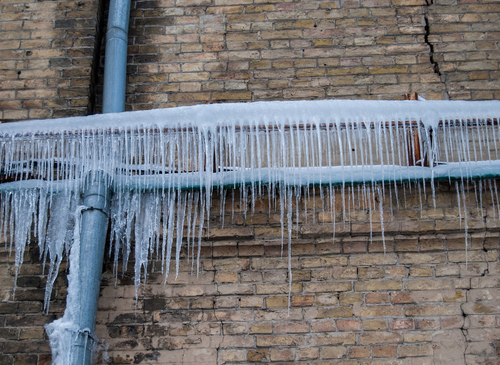Essential Tips for Preventing Frozen Plumbing in Cold Weather Seasons
Essential Tips for Preventing Frozen Plumbing in Cold Weather Seasons
Blog Article
The writer is making several great points about Winter Plumbing Precautions: Preventing Frozen Pipes in general in the content in the next paragraphs.

Cold weather can ruin your pipes, particularly by freezing pipelines. Here's just how to avoid it from happening and what to do if it does.
Intro
As temperatures decline, the risk of icy pipes boosts, possibly causing costly repair services and water damages. Comprehending how to avoid icy pipes is vital for homeowners in chilly environments.
Prevention Tips
Protecting prone pipelines
Wrap pipes in insulation sleeves or utilize warmth tape to protect them from freezing temperatures. Focus on pipelines in unheated or external locations of the home.
Heating techniques
Keep interior areas appropriately warmed, specifically areas with plumbing. Open cabinet doors to allow warm air to flow around pipelines under sinks.
Exactly how to determine icy pipes
Seek reduced water flow from taps, unusual odors or sounds from pipes, and noticeable frost on revealed pipelines.
Long-Term Solutions
Structural changes
Consider rerouting pipelines away from exterior wall surfaces or unheated areas. Include additional insulation to attics, basements, and crawl spaces.
Upgrading insulation
Invest in premium insulation for pipes, attics, and wall surfaces. Correct insulation assists preserve regular temperature levels and decreases the threat of frozen pipelines.
Safeguarding Exterior Pipes
Garden pipes and outdoor faucets
Separate and drain yard hose pipes prior to wintertime. Set up frost-proof spigots or cover outdoor taps with shielded caps.
Recognizing Frozen Pipelines
What causes pipes to ice up?
Pipes freeze when revealed to temperatures below 32 ° F (0 ° C) for extended durations. As water inside the pipes ices up, it expands, taxing the pipeline wall surfaces and potentially triggering them to break.
Dangers and damages
Icy pipes can cause water supply disruptions, building damages, and pricey repair services. Burst pipelines can flood homes and trigger comprehensive structural damage.
Signs of Frozen Piping
Determining icy pipes early can prevent them from breaking.
What to Do If Your Pipes Freeze
Immediate activities to take
If you presume icy pipelines, maintain faucets open to alleviate pressure as the ice thaws. Utilize a hairdryer or towels soaked in hot water to thaw pipes slowly.
Final thought
Preventing frozen pipelines requires positive steps and fast responses. By comprehending the reasons, indications, and safety nets, property owners can protect their plumbing throughout cold weather.
5 Ways to Prevent Frozen Pipes
Drain Outdoor Faucets and Disconnect Hoses
First, close the shut-off valve that controls the flow of water in the pipe to your outdoor faucet. Then, head outside to disconnect and drain your hose and open the outdoor faucet to allow the water to completely drain out of the line. Turn off the faucet when done. Finally, head back to the shut-off valve and drain the remaining water inside the pipe into a bucket or container. Additionally, if you have a home irrigation system, you should consider hiring an expert to clear the system of water each year.
Insulate Pipes
One of the best and most cost-effective methods for preventing frozen water pipes is to wrap your pipes with insulation. This is especially important for areas in your home that aren’t exposed to heat, such as an attic. We suggest using foam sleeves, which can typically be found at your local hardware store.
Keep Heat Running at 65
Your pipes are located inside your walls, and the temperature there is much colder than the rest of the house. To prevent your pipes from freezing, The Insurance Information Institute suggests that you keep your home heated to at least 65 degrees, even when traveling. You may want to invest in smart devices that can keep an eye on the temperature in your home while you’re away.
Leave Water Dripping
Moving water — even a small trickle — can prevent ice from forming inside your pipes. When freezing temps are imminent, start a drip of water from all faucets that serve exposed pipes. Leaving a few faucets running will also help relieve pressure inside the pipes and help prevent a rupture if the water inside freezes.
Open Cupboard Doors
Warm your kitchen and bathroom pipes by opening cupboards and vanities. You should also leave your interior doors ajar to help warm air circulate evenly throughout your home.

Hopefully you enjoyed reading our piece about 6 Ways to Prevent Frozen Pipes. Thanks a ton for spending some time to read through our piece. Do you know somebody who is excited by Prevent Frozen Pipes ? Please feel free to share it. Thanks a bunch for being here. Return soon.
Article Report this page